Happy Thanksgiving, Crawlspacers! I figured I’d put out my next article a little earlier than usual since I’ll be pretty wrapped up this upcoming weekend.
Today we’ll be taking a look at Kravinov’s Revenge in SPECTACULAR SPIDER-MAN vol. 1 #241-245 by J.M. DeMatteis and Luke Ross from 1997.
J.M. DeMatteis’s first stint on SPECTACULAR in #178-200 from 1992-1993 (which I previously discussed) is commonly lauded as a classic run, but his second go-around on the same title from #241-257 is rarely ever talked about. In fact, Spider-Man comics in general from 1997-1998 are seldom spoken of. It’s not hard to see why as these years were when the big comic book crash of the 1990s was in full affect and Marvel was clawing its way out of bankruptcy. The fact that this particular period is also sandwiched in between two of the most loathed eras in Spider-Man’s history (The Clone Saga from 1994-1996 and the Howard Mackie relaunch from 1999-2001) probably doesn’t help matters. It’s unfortunate because there were some really solid stories during these two years, especially from DeMatteis on SPECTACULAR. One of his best is definitely Kravinov’s Revenge, where he takes a very interesting look at Spidey’s original foe: Dimitri Smerdyakov a.k.a. The Chameleon.
The Chameleon is actually the first big super-villain (despite not having any real powers at the time) Spidey has ever fought, debuting in AMAZING SPIDER-MAN vol. 1 #1 from 1963.
Despite having such a long publication history, how many great and/or memorable Chameleon appearances have there been before this point? Not very many to my mind. The character always lacked a distinct identity (which I suppose is somewhat fitting for a master of disguise), making him one of Spidey’s weaker B-list enemies. But much like The Vulture, J.M. DeMatteis comes along and crafts what is arguably the definitive Chameleon tale, or at the very least a darn good one.
Our tale begins in the Ravencroft Institute with Dr. Ashley Kafka unsuccessfully trying to treat a rather unhinged Chameleon.
Knowing that The Chameleon will soon be transferred to a more secure facility, Kafka secretly moves him to the basement for further treatment. Unsurprisingly, this ends up being a very bad idea.
Chameleon escapes and immediately seeks vengeance on Spider-Man for imprisoning him, eventually confronting the web-slinger like so:
But before Spidey can extract his own vengeance on The Chameleon for the events of the terrible Lifetheft story arc from AMAZING SPIDER-MAN vol. 1 #386-387 (a.k.a. the “Robot Parents” debacle; don’t ask), Smerdyakov outfoxes our hero.
Strange? Well it’s about to get stranger:
Well that was unexpected. How is our favorite wall-crawler going to get out of this one? How far will The Chameleon go to break him? And most importantly, what exactly will The Chameleon do now that he has unmasked his greatest enemy? Well I’m certainly not going to tell you here; read it for yourself!
The Chameleon is at his craftiest here, using excessive duplicity and manipulation to say one step ahead of his enemies the entire time. Yet in spite of his rather sinister and cunning portrayal, The Chameleon is also quite cowardly in this story as all of his doubts, fears and insecurities eat away at him. This is due to his miserable childhood, primarily his history with Kraven The Hunter, which is greatly expanded upon here. In typical J.M. DeMatteis fashion, he explores the depths of Dimitri Smerdyakov’s psyche and makes him a more interesting character as a result.
What also makes this story effective is the good amount of humor throughout it. Seeing as how this arc takes place after The Clone Saga, it could have easily been a bleak and joyless affair. Thankfully, DeMatteis avoids such tropes and packs some really solid wit into his writing. The best has to be the random intervening appearances of the new Kangaroo.
Other humorous bits such as overt, yet subtle references/jabs to The Clone Saga ensure that this story is never bogged down by too much darkness.
Also, I would be remiss not to mention the hilarious ending to this arc. The Chameleon ends up using his newfound knowledge of Spidey’s identity to impersonate Peter Parker and go after his wife, Mary Jane.
Without spoiling the outcome, let’s just say that it doesn’t quite go the way Chameleon may have expected. This ending is a firm reminder of why Mary Jane Watson is such a popular character in the first place and why she is widely considered by fans to be Peter’s greatest love interest.
Unfortunately, these five issues have never been collected in any kind of TPB, so you will have to track down the individual issues.
Kravinov’s Revenge might just be the greatest Chameleon story ever told and is a strong example of J.M. DeMatteis’s writing prowess. A rock solid arc from an underrated era.

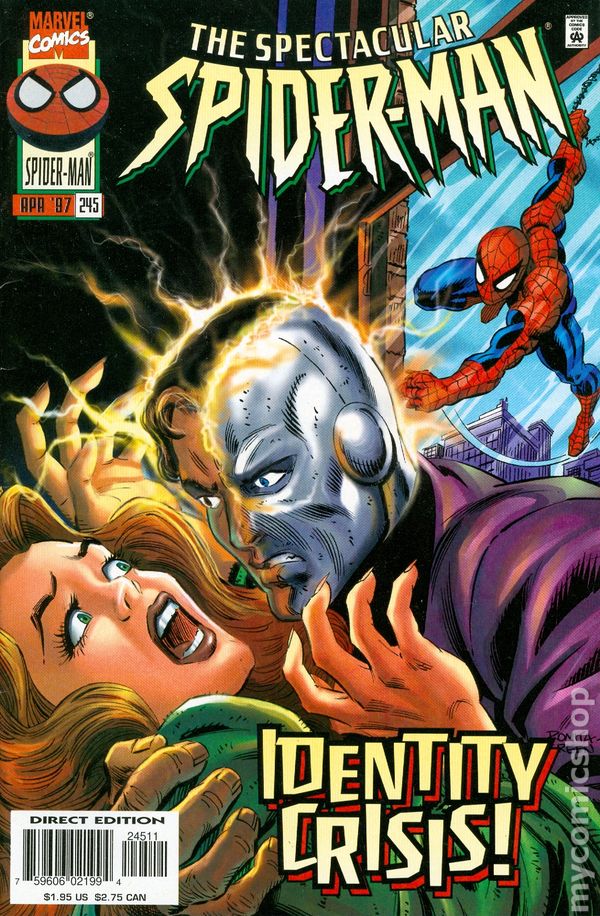
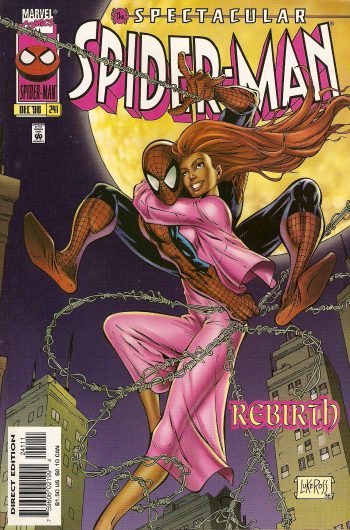



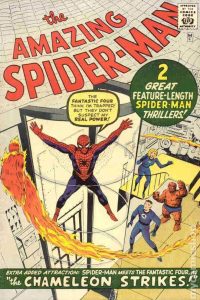










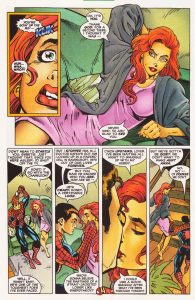
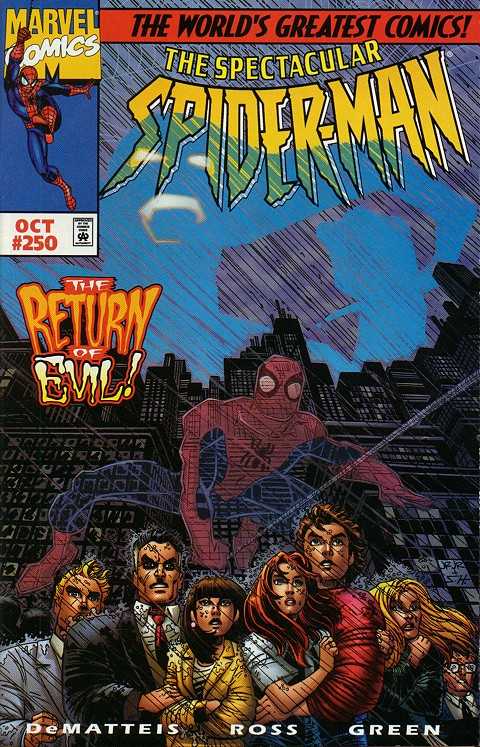
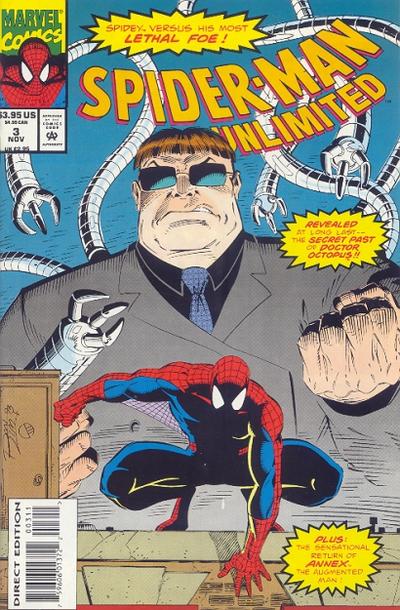
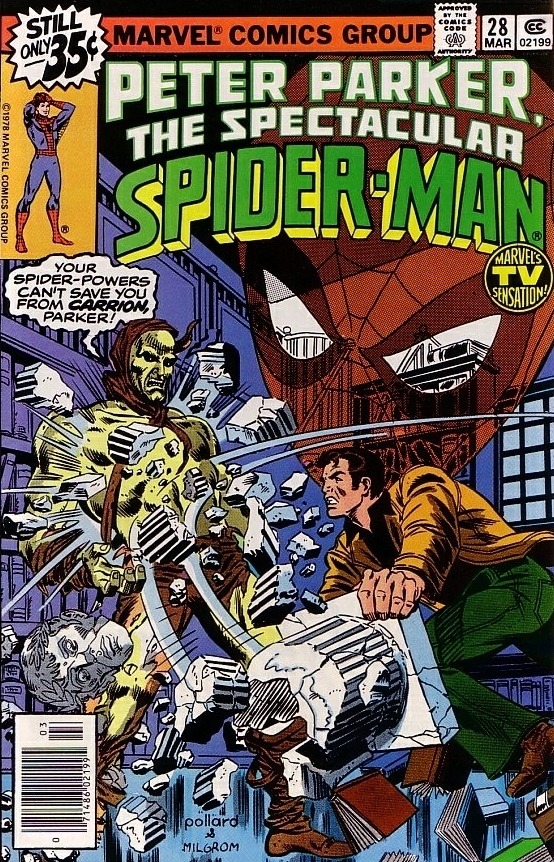





@Joshua – To each their own. Maybe it was the fact that someone was finally doing something with the character of Max Dillon, but I liked what JMD did with him here.
@hornacek — To specify, I’m glad that DeMatteis attempted to flesh out Max Dillon with “Light the Night”, I just don’t think he did a particularly good job in that instance.
@Joshua
“I don’t feel there has ever really been a definitive Electro story”
See, that’s exactly why I *did* like the Light The Night story. Finally someone was doing something with the character of Electro. I think when that first came out for a moment I thought “Wait, this is a retcon to Electro’s character” but then I realized that the “character” of Electro had never been developed at all. JMD literally had a blank slate to do whatever he wanted with Max Dillon’s back story and it wouldn’t interfere with previous appearances.
I’m reminded of the announcement that Electro would be the villain in ASM2, and someone on the podcast (maybe JR) said that he would be a good visual villain in a movie, but that the character of Max Dillon was such a literal blank slate it didn’t matter if they changed him to have Jamie Foxx play him, because there was nothing interesting about Max Dillon’s character besides him wearing a costume and committing crimes.
@AndrewC — That story wasn’t bad, but it was nothing that special either. I honestly think Electro’s best appearance is in MARVEL KNIGHTS vol. 1 #3 during the “Down Among the Dead Men” story arc. His fight with Spidey there is pretty awesome.
Despite liking Electro a lot, he hasn’t been in many strong stories. ‘Return of Sin-Eater’ is pretty good. But I guess my personal favorite would be ASM#425 where Peter (in that cool insulated outfit) and X-Man take him on.
@hornacek — I honestly didn’t care for “Light the Night” all that much and consider it to be one of DeMatteis’s weaker efforts. Electro came off as way too pathetic to be taken seriously and I could care less about the bland thug who just wants to be noticed. A much better Electro story in my opinion is “The Return of The Sin-Eater” (SPECTACULAR vol. 1 #134-136). Though to be fair, that story is more effective due to its portrayal of Stan Carter rather than Max Dillon. Come to think of it, I don’t feel there has ever really been a definitive Electro story.
@Joshua JMD’s “Light The Night” 3 parter in adjective-less Spider-Man (?) made me actually care about Electro for the first time ever. It was so disappointing when in his next appearance they acknowledged that story but had Electro say that he was ignoring all the character development and going back to being a standard villain.
@Andre L. Santana — I always felt that character exploration was one of DeMatteis’s greatest strengths as a writer. If you look at his history with Spider-Man, he has a very good track record of fleshing out villains that didn’t always have the most significant amount of depth to them.
I will definetely check that out once more; and it’s a shame I read it just once.
Joshua is right explaining the reason why: even though being a DeMatteis storyline, the storyline was crunched right in the middle between and old and new run.
And the connection between him – The Chameleon – and the Kravinoff family was a mastertouch; surely added more background history to the character.
@hornacek — Well considering how reluctant Marvel is to draw attractive women in their comics nowadays, I can’t say I mind it all that much. Still, it’s a really distracting continuity error.
@Will — McFarlane and Ross are definitely two of my favorite Spidey artists. Ross in particular is highly underappreciated.
Kafka being a man is just one of many things that movie got wrong.
@Joshua I’d say making Kafka a man in The Amazing Spider-Man 2 was a bigger continuity error…
I forgot how much Luke Ross’ art looked like Todd McFarlane’s. I miss both of their work…
@Joshua – How quickly does he make John Jameson and Dr. Kafka a couple? I’m guessing if he intended to do that right away after the Clone Saga, Marvel would want her de-aged and beautified up, because who wants to read about a male supporting character be interested in a woman a bit older than him and who isn’t smoking hot?
@hornacek — To my knowledge, yes. Since J.M. DeMatteis used her extensively during his first stint on SPECTACULAR, I’m assuming that was Luke Ross’s idea. Kafka going from old and overweight to young and attractive is one of the biggest continuity errors in Spider-Man history.
Was this the story that redesigned Dr. Kafka from a middle-aged slightly-overweight woman to a young, thin and attractive model type?
@Patrick Mocella — Your best bet would probably be to order them off of Amazon like I did.
@hornacek — DeMatteis seems to be typecast by many people as “the serious writer” when he is also great with humor. “Another Fine Mess” from SPECTACULAR SPIDER-MAN vol. 1 #185 is hilarious and another one of my favorite Spider-Man stories from the 1990s.
Coincidentally, Jenkins’s Chameleon story, “The Show Must Go On”, from WEBSPINNERS is another overlooked gem that I plan on covering some day.
@AndrewC — Thank you for the kind words, Andrew. I’m glad you’re having as much fun reading these articles as I am writing them.
While I’d certainly like to see DeMatteis return to the franchise, I remember him saying in a Crawlspace podcast interview back in 2008 that he feels as though he has nothing left to say about the character. But seeing as how that was almost a decade ago, perhaps he’ll change his mind.
SPECTACULAR SPIDER-MAN vol. 1 #250 a.k.a. “Citizen Osborn” is another great DeMatteis issue that I plan on discussing eventually, along with the aforementioned “The Show Must Go On” arc.
@AndrewC – Ah, you’re right, it was Jenkins who wrote that Chameleon Webspinners story, not Kelly. In fact, I think I read that it was that WS story that got Jenkins the job writing Spider-Man. I was mixing up Kelly writing The Bridge WS story.
As for the spider-sense, it was probably going off already just by standing in front of the Chameleon.
One very small nitpick I’d have with this story is why didn’t Spidey’s spider sense warn him about the drug laced in Chameleon’s coat (and why didn’t it knock out Chameleon for that matter). But I understand sometimes the rules have to be bent in order to advance the story.
Very good pick. It amazes me how under appreciated and dismissed the post-clone saga era was. JM DeMatteis’ late 90s Spec run was magnificent. Spec #250 with the (second) return of Norman Osborn is another overlooked gem. What is DeMatteis doing these days, and is there any way we can twist his arm into a third crack at Spidey (imagine if he was the writer that undid OMD)?
Another overlooked Chameleon gem is Paul Jenkins’ excellent Webspinners #10-12. Highly recommend checking that out if you haven’t.
Loving this series, dude. Best new feature on the crawl space in years. Big ups!
This story literally came out right after the end of the Clone Saga, so it had to do a lot to set the post-Clone Saga tone for the books. They made a great decision getting DeMatteis back for this book, wish he had stayed longer.
The Chameleon is a strange Spidey villain in that he has never been a physical threat, and up until the Micheline run he never had any powers, just using masks to disguise himself. It wasn’t until the ASM issue “The Thief Who Stole Himself” (a great and memorable issue title which always reminds me of the novel “The Man Who Folded Himself”) where he got the powers to physically change his appearance using holograms and technology (?). But it wasn’t until his familial relationship with Kraven was revealed that he became interesting to me (and considering all the Chameleon/Kraven interactions in the Lee/Ditko and Lee/Romita era, it was a retcon I was ok with).
For as much as he’s known for writing dark and introspective stories, I agree that DeMatteis isn’t given enough credit for his use of humor in those stories, or his outright comedy issues. The Legion of Losers, anyone?
I don’t know if this is my favorite Chameleon story; it may be a tie with the Joe Kelly (?) 3-parter in Webspinners.
i got the last issue of this arc and damnit, now I really have to track down the others.